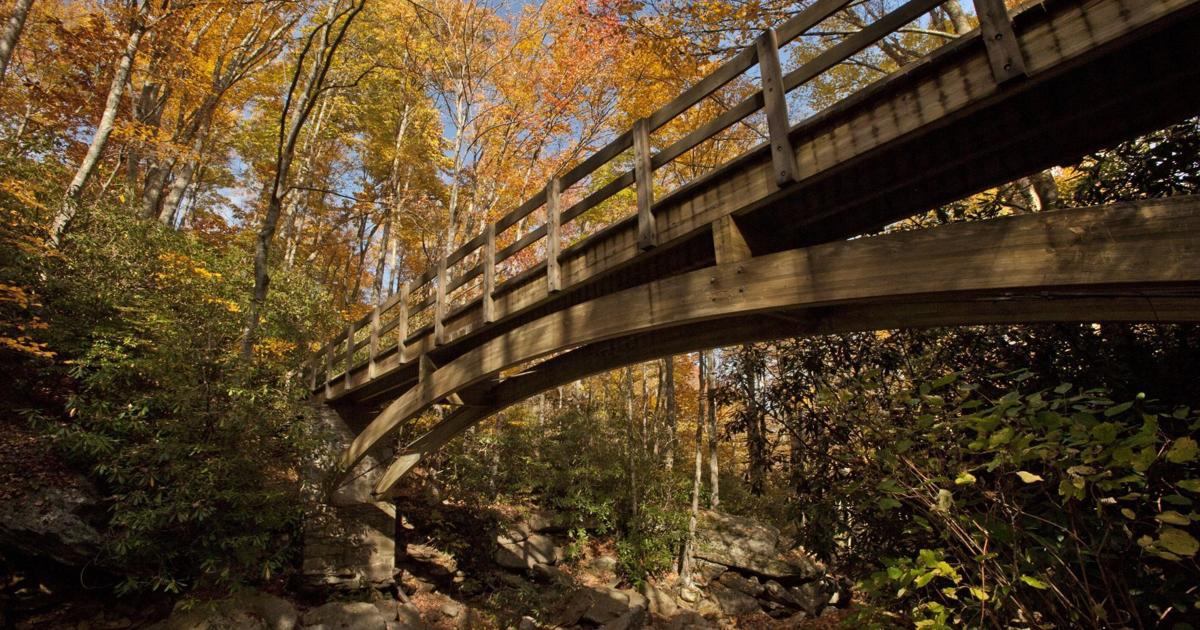
The slight chill in the air and sunny days ahead should add some pop to the fall color show in the mountains, longtime foliage expert Howie Neufeld said.
Swaths of trees will begin to turn red, yellow and orange beginning this weekend, with colors expected to be at their most vibrant in two weeks in areas with elevations between 3,000 and 5,000 feet. That includes Boone, Blowing Rock, Grandfather Mountain and Doughton Park, said Neufeld, a biologist at Appalachian State University and one of the state’s go-to fall foliage forecasters.
Peak fall colors arrive in lower elevations at the rate of about 1,000 feet a week. By the end of October, areas at 2,000 feet, including Pilot Mountain State Park, will be at their showiest. The blaze of colors should hit the Piedmont in mid-November, Neufeld said.
With peaks towering over 5,000 feet and vast areas of the state at sea level, North Carolina has a leaf-peeping season of approximately eight weeks, one of the longest in the country.
“Whereas in New England, you get about two weeks,” Neufeld said.
This year’s foliage patterns have been difficult to predict.
“It was an unusual summer. It was really hot in July, but it got cool in August. Trees started changing a little early, and people thought it might be early this year,” he said. “And then at the end of August and first of September, temperatures were back up again.”
Listen now and subscribe: Apple Podcasts | Google Podcasts | Spotify | RSS Feed | SoundStack
Warmer temperatures delay peak season and lead to duller colors, Neufeld said.
The cooler temperatures that arrived on Monday should put peak season back on track. And the sunshine that arrived this week will lead to deeper reds on the dogwoods and sourwoods, richer yellows on black locusts and chestnut oaks and flashier oranges on the sugar maples and black gums.
Foliage fans will have access to most of the Blue Ridge Parkway this year, Neufeld said.
Last year, damage from Hurricane Helene forced the parkway to close, a significant blow to mountain communities that rely on tourism dollars.
“Accessibility should not be a problem, though some trails are still closed,” he said.
Visitors along the parkway may notice that some views lack the same punch of color as in years past. Helene leveled between 5 million and 17 million trees on 822,000 acres, mostly on southeast-facing slopes. For comparison’s sake, Neufeld said that the entirety of Great Smoky Mountains National Park is about 600,000 acres.
“You may have bare patches that impact the view this year,” Neufeld said. “But the trees that were not knocked down should have good color this year.”
Because conditions on the parkway change frequently, it’s best to check its website before heading out. Visit https://www.nps.gov/blri/index.htm for more information.
lodonnell@wsjournal.com
336-727-7420
@lisaodonnellWSJ
Stay up-to-date on what’s happening
Receive the latest in local entertainment news in your inbox weekly!
* I understand and agree that registration on or use of this site constitutes agreement to its user agreement and privacy policy.
Lisa O’Donnell
Get email notifications on {{subject}} daily!
Your notification has been saved.
There was a problem saving your notification.
{{description}}
Email notifications are only sent once a day, and only if there are new matching items.
Followed notifications
Please log in to use this feature
Log In
Don’t have an account? Sign Up Today



